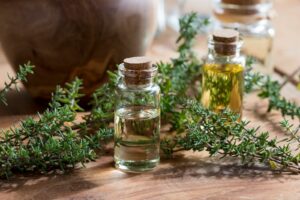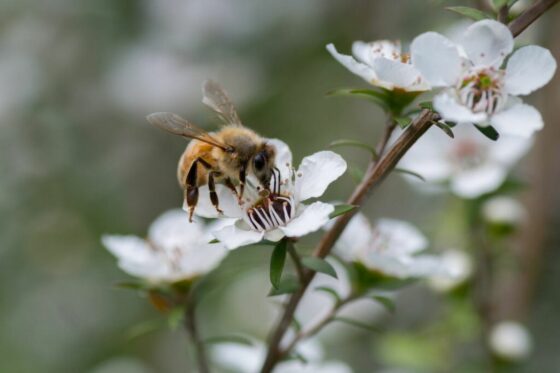Climbing plants for bees: the best bee-friendly climbers for the garden
Climbing plants not only make a beautiful addition to any house wall or garden fence, but they also attract a variety of insects. Here are our top 13 bee-friendly climbers.

Plants that attract insects do not have to be limited to horizontal surfaces. Insect-friendly climbers make it possible to green vertical surfaces while also providing a food source for bees, bumblebees, and other insects. You can transform your house wall, garage or carport into a fragrant and buzzing sea of flowers this way. Read on to find out the best flowering climbing plants for bees and insects.
Contents
Broad-leaved everlasting pea
The broad-leaved everlasting pea (Lathyrus latifolius) is a favourite of cottage gardens. This well-known flowering climbing plant is not only popular for adding colour to garden fences or walls in the summer but is also a great low maintenance climbing plant for bees and butterflies.

Clematis
Clematis (Clematis) not only delights us with its beautiful and lush flowers all summer long, but it also attracts insects and bees. Some clematis species, such as Clematis alpina, Clematis vitalba or Clematis integrifolia, are also hardy and can therefore be cultivated perennially.
Cup and saucer vine
Cup and saucer vines (Cobaea scandens), also known as cathedral bells, are prized for their fast growth. This bee friendly climbing plant quickly grows into a screen for the balcony or in the garden. What is more, the imposing purple flowers attract many beneficial insects to your garden from June until the first frost.

Black-eyed Susan
The black-eyed Susan (Thunbergia alata) is a classic among bee-friendly climbing plants. This flowering climber is a true insect magnet. The orange flowers with their distinct black dot in the centre are only too happy to be visited by insects of all kinds.
Wisteria
The list of hardy bee-friendly climbing plants would be incomplete without wisteria (Wisteria). Bees, bumblebees and other insects flock to its blue flowers. This flowering climber is not only an invaluable food source for bees, but birds also love to nibble on the buds in spring. But beware, wisteria is poisonous to humans!
Honeysuckle
Honeysuckle (Lonicera henryi) is another hardy climber that attracts insects. From June to July, the red and yellow flowers are wonderfully fragrant and draw all kinds of winged insects to your garden. Honeysuckle is also ideal for vertical greening larger areas, as it grows up to four metres tall.

Boston ivy
Even for bee lovers without green fingers, nature has plenty of climbing plants to offer. One of these is the Boston ivy (Parthenocissus tricuspidata), also known as the Japanese creeper. The Boston ivy is a perennial and extremely easy to care for plant that climbs effortlessly up house facades or walls. The yellow flowers are rather small and inconspicuous, but they provide an abundance of food for insects.
Winter jasmine
Another bee-friendly climbing plant is winter jasmine (Jasminum nudiflorum). It already provides a food source for insects when many other plants are still dormant. The small, yellow flowers attract insects as early as December, but at the latest from February to the end of April.
Trumpet vine
With its beautiful orange-red flowers, the trumpet vine (Campsis) is not only a feast for the eyes but also a magnet for insects. This vigorous climber is hardy, perennial and easy to grow, and it flowers from August to the end of September.

Passion flower
The eye-catching passion flowers (Passiflora) are a real showstopper in the garden. Not only do we adore these exotic flowers, but insects do as well. The extravagant flowers attract bees, bumblebees and other insects in droves. Some passion flower varieties are even hardy and can be grown as perennials. These include, for example, the blue passion flower (Passiflora caerulea) and apricot vine (Passiflora incarnata).
Garden nasturtium
Another bee friendly climbing plant is the garden flame nasturtium (Tropaeolum). Not only do we enjoy the pungent flowers in our salads; the red, yellow, and orange flowers are also a feast for many insects.
Potato bean
The potato bean (Apios) is a relatively unknown exotic among the flowering climbing plants. This climber belongs to the Faboideae family and bears dark red flowers with a spicy fragrance from August onwards, providing plenty of food for insects.
Cucumber
When you think of bee-friendly climbing plants, the common cucumber (Cucumis sativus) may not be the first thing that comes to mind. However, useful plants can be just as beneficial to bees and insects as ornamental plants. The yellow flowers bloom from June to August and are happily visited by beneficial insects.




























